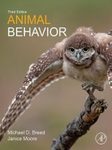About this book
Microbial Diversity in the Genomic Era: Functional Diversity and Community Analysis, Second Edition presents techniques used for microbial taxonomy and phylogeny, along with their applications and respective strengths and challenges. The book incorporates recently developed biosystematics methods and approaches to assess microbial taxonomy, with suitable recommendations for where to apply them across the range of bacterial identification and infectious disease research. Sections provide a broad overview of microbial genomics research and microbiome directed medicine and update on molecular tools for microbial diversity research, extremophilic microbial diversity, functional microbial diversity across application areas, microbial diversity and infectious disease research, and future directions. Step-by-step methodologies are provided for key techniques, along with applied case studies that break down recent research studies into practical components, thus illuminating pathways for new studies across the field.
Contents
Section I: Overview of microbial diversity
1.1 Methods of assessment of microbial diversity in natural environments
1.2 Assessment of diversity, stability and resilience of human gut micobiota
1.3 Microbial biodiversity study of a brackish water ecosystem in eastern India: The Chilika Lake
1.4 Microbial diversity and community analysis of Sundarban mangrove, the world heritage site
1.5 Metagenomic analysis of microbial diversity in croplands
1.6 Assessment of evolution and diversity of rhizobia through genomic approach
Section II: Molecular tools in microbial diversity
2.1 Advanced techniques to study functional microbial diversity
2.2 Deriving microbial community fingerprint from environmental samples using RAPD, DGGE, ARDRA, RISA, SSCP, T-RFLP, and FISH
2.3 Genomic insights on the structure and function of benthic and pelagic microbial communities of Chilika Lagoon
2.4 Molecular tools in microbial diversity: Functional assessment tool of genome and metagenome by MAPLE
2.5 A polyphasic taxonomic approach for designation and description of novel microbial species
2.6 Biochemical strategies to counter nitrosative stress: Nanofactories for value-added products
2.7 Exploring microbial diversity and function in petroleum hydrocarbon associated environments through Omics approaches
Section III: Extremophilic microbial diversity
3.1 Diversity of Psychrophilic Bacteria in Sea and Glacier Ice environments - Insights through Genomics, Metagenomics and Proteomics Approaches
3.2 Selection of microbiome in the gut of Caenorhabditis elegans: a model for microbiome research
3.3 Assessment of microbial diversity in hot springs for their sustainable use
3.4 Opening the black box of thermophilic autotrophic bacterial diversity
3.5 Exploring the microbial diversity in extreme acidic environment using molecular techniques
3.6 Study on diversity and bioprospecting of alkaliphiles
3.7 Exploitation of functional diversity of Cyanobacteria from extreme environments
3.8 Study of microbial community dynamics genetic regulations of extremophiles
Section IV: Functional Microbial Diversity
4.1 Functional microbial diversity in context to agriculture
4.2 Functional microbial diversity in contaminated environment and application in bioremediation
4.3 Structural and functional diversity of microbial metallothionein genes
4.4 Functional diversity of bacterial strategies to cope with metal toxicity
4.5 Functional microbial diversity: Functional genomics and metagenomics using MAPLE
4.6 Linking the environmental microbial diversity and antibiotic resistance
4.7 Functional gene diversity and metabolic potential of uncultured bacteria
4.8 Analysis of microbial diversity to estimate post-mortem time intervals in cadavers
Section V: Microbial diversity and infectious diseases
5.1 Exploring fish microbial communities to mitigate aquaculture related diseases
5.2 Clinical and biological insights from sequencing of viral genome
5.3 Exploring plant-microbe interaction in the post-genomic era
5.4 Prevalence of Multidrug Resistances (MDR) in Environmental Communities
5.5 Pathogenic microbial genetic diversity with reference to significant medical and public health
5.6 Study of microbial diversity for application in microbiome directed medicine
Section VI: Future directions of microbial diversity studies
6.1 Understanding the structure and function of extreme microbiome through genomics: scope and challenges
6.2 The role and future possibilities of next-generation sequencing in studying microbial diversity
6.3 Taxonomical diversity of extremophiles in the deep biosphere
6.4 Molecular evolution of Xenobiotic-degrading genes and mobile DNA elements in soil bacteria
6.5 Whole genome sequencing and metagenomic approaches to study microbial diversity
6.6 Microbial DNA barcoding: A tool for microbial taxonomy, molecular phylogenetic and population genetics
Customer Reviews
Biography
Prof. Surajit Das is currently working at the Department of Life Science, National Institute of Technology Rourkela, India. He received his doctoral degree in Marine Biology with specialization in microbiology from the Centre of Advanced Study in Marine Biology, Annamalai University, Tamil Nadu, India. He has been awarded the Endeavour Research Fellowship by the Australian Government to conduct postdoctoral research on marine microbial technology at the University of Tasmania. He has more than 15 years of research experience in environmental biotechnology, marine microbiology, bacterial biofilm, wastewater treatment, and bioremediation. Prof. Das has maintained a strong commitment to exploring the diversity of marine microorganisms from tropical, coastal, mangrove, and deep-sea environments using taxonomic and molecular tools. The main goal of his research is to understand the genetic regulation of bacterial biofilm for the improvement and development of biofilm-mediated bioremediation, thereby restoring the deteriorating environment as an eco-friendly approach.
Dr Hirak Ranjan Dash is an Assistant Professor of Forensic Biotechnology at the National Forensic Sciences University, Delhi Campus, India. He obtained his PhD degree in Life Science from the National Institute of Technology, Rourkela, India. Previously, he served as a DNA expert at Forensic Science Laboratory, Madhya Pradesh, India. His research interests include forensic microbiology, microbial phylogeny, forensic DNA analysis, genetic markers, and next-generation sequencing. He has published 50 research papers and 9 books. He has previously received a research fellowship from the Indian Academy of Science. He is a pioneer in India working on NGS-based forensic DNA analysis. He is a life member of the Association of Microbiologists of India, the International Society of Forensic Geneticists, and the Asian Federation of Biotechnologists.



































